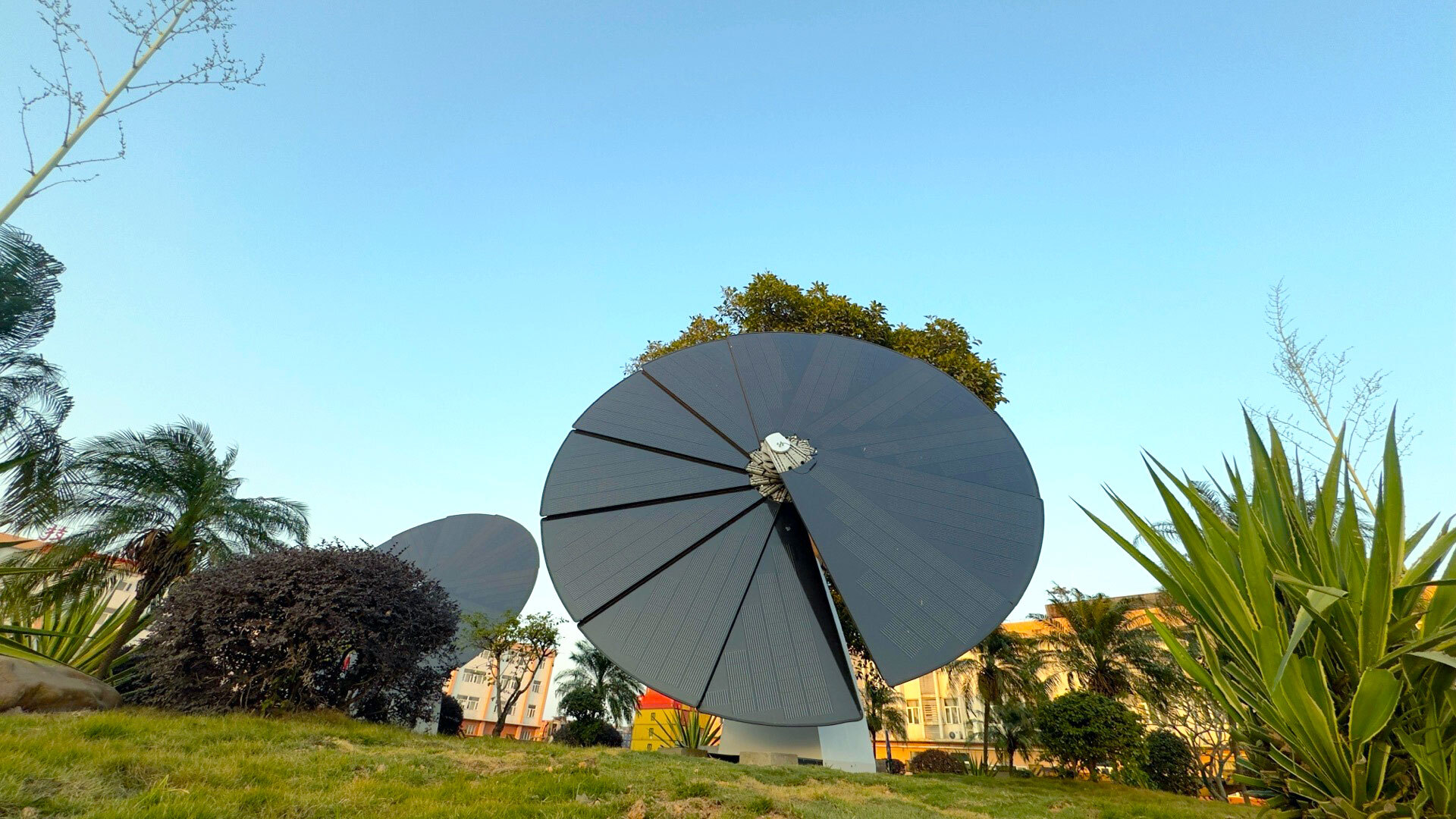In the face of escalating global climate change and environmental challenges, the pursuit of low-carbon living has emerged as a worldwide consensus. Within this context, photovoltaic sunflowers, an innovative solar power system, are increasingly becoming vital components of sustainable campuses. These devices not only supply clean energy but also serve as educational tools that foster environmental awareness among students. This article delves into the top ten applications of photovoltaic sunflowers in creating low-carbon campuses, highlighting the diverse value of this eco-friendly energy solution.
1. Green Energy Supply
Photovoltaic sunflowers represent a highly intelligent solar energy storage system. Unlike static photovoltaic panels, these sunflowers automatically track the sun’s path, ensuring optimal exposure for maximum power generation. On campuses, they provide a reliable energy source for academic buildings, labs, libraries, and more. Envision a campus where these structures’ power needs are detached from fossil fuels—a significant reduction in environmental impact and an exciting prospect indeed!
2. Education and Public Outreach
Beyond energy provision, photovoltaic sunflowers also serve as educational tools. Their presence on campuses offers students a hands-on learning experience, allowing them to grasp the principles and processes of solar power. This practical approach to learning not only reinforces the importance of renewable energy but also enhances environmental consciousness and fosters innovative thinking. It’s a more engaging and effective method than traditional lectures, sparking students’ interest in science and sustainability.
3. Zero-Carbon Demonstration
Implementing photovoltaic sunflowers is a crucial step toward achieving zero-carbon emissions on campuses. By decreasing reliance on fossil fuels, campuses can substantially lower their carbon footprint. The operation of these sunflowers not only curbs energy consumption but also mitigates climate change by diminishing greenhouse gas emissions. This model can enhance a campus’s reputation and inspire other institutions and individuals to contribute to a more sustainable future.
4. Landscape and Environmental Beautification
Drawing inspiration from nature’s sunflowers, photovoltaic sunflowers boast a unique design that serves both functional and aesthetic purposes. They can be seamlessly integrated into campus landscapes, adding to the visual appeal. Their presence enhances the campus’s beauty and creates a more pleasant learning environment for students. Additionally, the greenery atop these sunflowers helps improve the campus microclimate, delivering fresher air.
5. Nighttime Illumination
Photovoltaic sunflowers also play a key role in nighttime lighting. They harness solar energy by day and convert it into electrical power for streetlights and landscape lighting after dark. This self-sustaining lighting scheme reduces energy consumption and operational costs while minimizing reliance on the conventional power grid, promoting a more independent and sustainable energy supply.
6. Intelligent Management Systems
Equipped with cutting-edge intelligent management systems, photovoltaic sunflowers optimize energy distribution and ensure a stable and efficient power supply. These systems use real-time monitoring and data analysis to automatically adjust the sunflowers’ operation according to varying weather and energy demands. This smart management not only boosts energy efficiency but also offers students a practical learning opportunity to understand the latest energy management technologies.
7. A Comprehensive Practice Platform
Photovoltaic sunflowers offer students an invaluable platform for comprehensive practice. They can learn to maintain and enhance solar power systems, applying knowledge from physics, engineering, environmental science, and economics. These activities bridge theory and practice, enhancing students’ practical skills and innovation. This interdisciplinary approach is crucial for nurturing future scientists, engineers, and environmental experts.
8. Environmental Education and Research
On campuses, photovoltaic sunflowers are prime examples for environmental education and research. Students can conduct research on solar cell efficiency, energy storage advancements, or environmental impact assessments. Such studies sharpen students’ research skills and offer valuable insights for solar technology and environmental solutions.
9. Community Engagement
Photovoltaic sunflower projects on campuses can strengthen ties between schools and communities. By inviting residents to explore these facilities, schools can educate them on the technology’s benefits, raising environmental awareness and encouraging green living practices. This collaboration promotes sustainable development and a harmonious social environment.
10. Energy Conservation and Emission Reduction Showcase
The use of photovoltaic sunflowers vividly demonstrates the impact of energy conservation and emission reduction. By reducing fossil fuel dependence and greenhouse gas emissions, these sunflowers significantly contribute to campuses’ sustainability efforts. This showcase not only motivates campus community members to adopt more eco-friendly practices but also sets an example for other institutions and communities, driving a green revolution towards a sustainable future.
In conclusion, the integration of photovoltaic sunflowers in low-carbon campuses promotes sustainable energy use and offers educational, aesthetic, and research values. These applications bring clean energy and valuable learning experiences to campuses. With ongoing advancements and broader adoption of photovoltaic sunflower technology, it’s clear that this green energy solution will play an increasingly crucial role in shaping a greener, smarter, and better future for our educational institutions.


